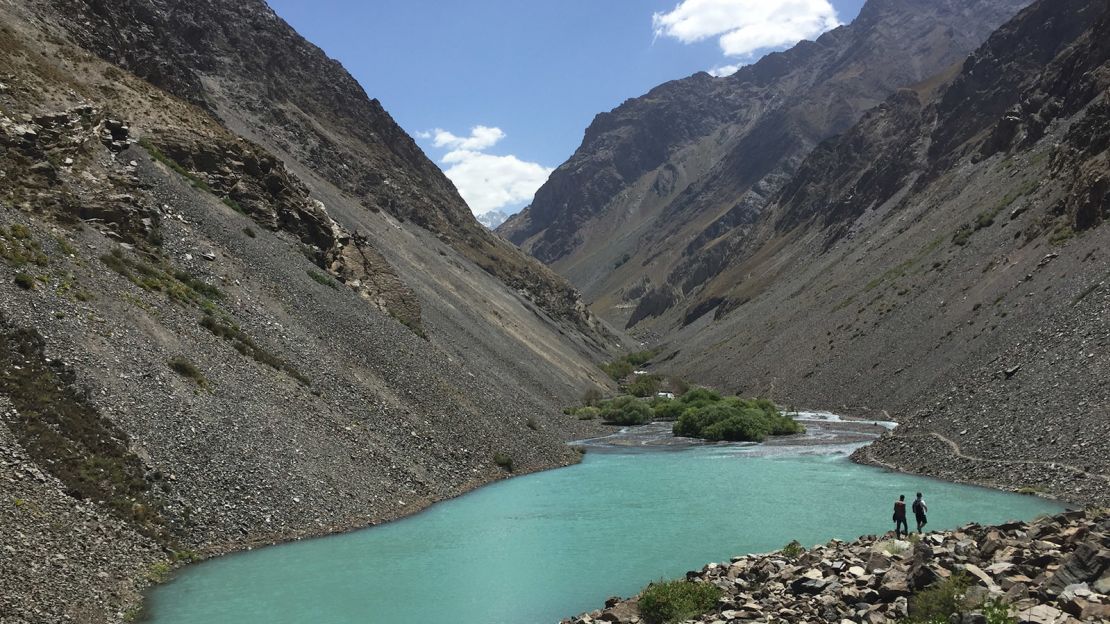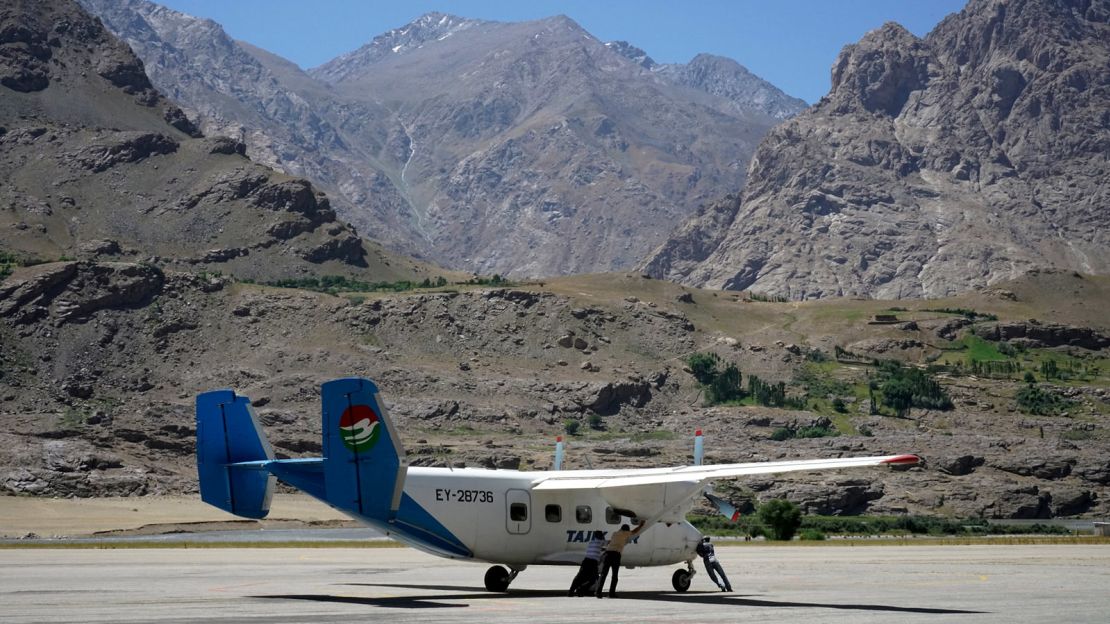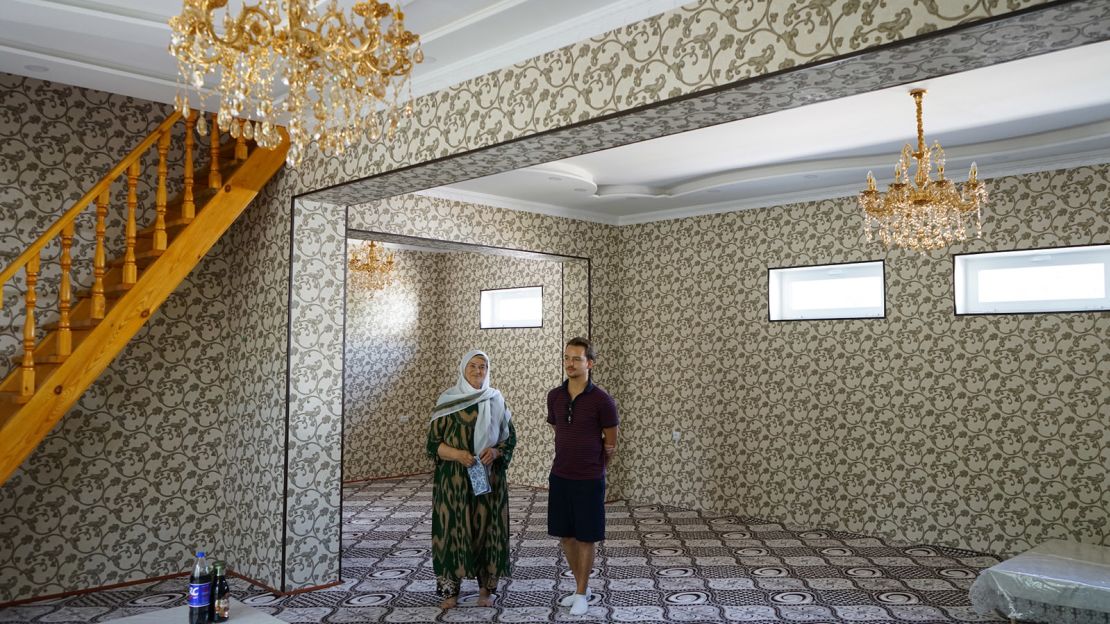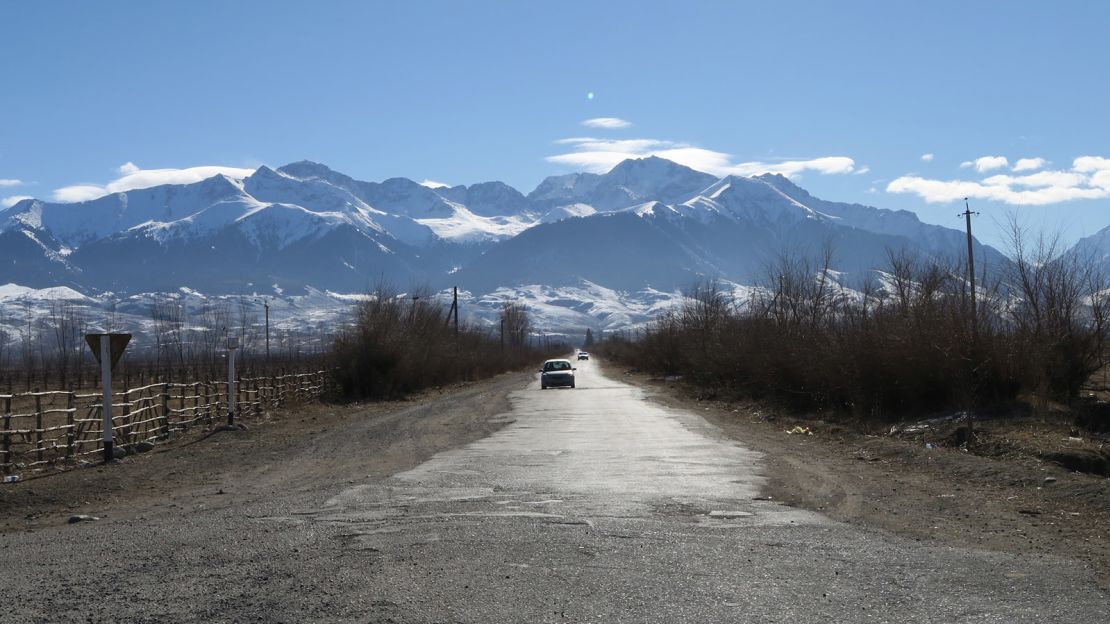We were sweaty, hungry and covered in dust as we left the Bartang Valley on another bluebird day in the Pamir Mountains.
After a spectacular, but exhausting, two-day hike under the blazing August sun, it was a relief to finally settle in under the shade of the van for the ride back to Khorugh, capital of Tajikistan’s Gorno-Badakhshan region.
Unfortunately, the van’s air conditioning didn’t work, and the hot breeze coming through the window was doing little to cool us off.
A bumpy 90-minute drive later, we were nearing our destination, and began to recognize the small Afghan villages that lay across the Panj River.
The Panj forms a natural border between Tajikistan and Afghanistan in this part of the country, and is usually quite muddy and fast-running due to the amount of glacial melt it gets.
But at one particular point along the drive, we noticed a small island in the middle of the river, which was forcing the rushing current to one side, leaving a calm, crystal-clear turquoise lagoon on the other.

Seeing a group of young kids swimming, my friend and I nodded at each other, already having decided on the perfect post-lunch activity.
We stood utterly awestruck on the river bank, a mere stone’s throw from Afghanistan, admiring the massive 5,000-meter mountains on either side of the valley. A farmer stood among his cows on the mid-river island, watching over them as they lazily grazed on virgin grass; smoke rose from the chimneys of traditional Afghan mud houses in the background.
The tranquility of the scene was suddenly broken by a piercing howl and large splash, as a Tajik boy sprung headfirst into the water beside me.
Snapping back to reality, I realized it was my turn to jump.
I lined myself up on the smooth stone diving rock the locals had carefully set up, and – “CANNONBALL!” I shouted, as I ran forward.
The water was as cool and refreshing as it looked, and I broke the surface to the sound of laughter and applause.
Four or five other young boys followed me in in quick succession, while a few others pushed off from the shore in rubber inner-tubes.
My friend artfully demonstrated “The Can-Opener” jump while I soaked up the surroundings, both literally and figuratively.
Tajikistan had exceeded my wildest expectations once again.
This was one of many special moments from my two recent trips to Central Asia, where I photographed scenes of Kyrgyzstan and Tajikistan’s stunning natural beauty, rich culture and ancient histories.
A destination for all seasons
Every season has something different to offer in Kyrgyzstan.
The high peaks of the east provide fantastic skiing in winter, while incredible colors await those who head to Ala Archa National Park, outside of Bishkek, in the fall.
Fields of beautiful wild flowers dot the countryside in spring, and summer offers incredible hiking in lush mountain valleys.

Not to be missed is Lake Issyk-Kul, the second largest saline lake in the world, after the Caspian Sea. It’s surrounded by white sand beaches, the snowcapped peaks of the Tian Shan range looming in the distance.
Trekking in Tajikistan is also sublime, with the summer months offering perfect hiking and camping conditions.
Unrivaled hospitality
It’s not only the mountains, glacial lakes and lush valleys that make these destinations worth visiting, but also the daily interactions with locals.
Central Asian hospitality is nothing short of remarkable.
Regardless of whether or not I was staying with a friend, in a guesthouse, or in a local family’s home, I was always treated like a brother, son or uncle.
Though Kyrgyzstan and Tajikistan are both small, landlocked, Muslim-majority countries that share a border, the differences between these former Soviet republics are stark.

Tajik people closely identify with Persians in Iran in terms of culture and language, and historically remained settled in one place.
Kyrgyz people on the other hand were (and some still are) nomadic, sharing some cultural and linguistic traits with other ethnic Turkic groups such as the Kazakh, Turkmen and Uzbek peoples.
Kyrgyzstan is lush and green during the summer, with rolling hills and some tall peaks in the more mountainous regions of the country.
Comparatively, Tajikistan is 93% mountainous, with over 50% of its territory sitting at altitudes over 3,000 meters above sea level.
The landscape is drier and the mountains are much rockier than in Kyrgyzstan, but glacial melt has created incredible rivers and valleys.
More on these beautiful countries in the above gallery.
Getting there
Capitals Bishkek (Kyrgyzstan) and Dushanbe (Tajikistan) are serviced by flights from Moscow, Istanbul, Dubai, Almaty and Urumqi. A few budget airlines also fly to these capitals, such as Pegasus Airlines (Istanbul), FlyDubai (Dubai), and S7 (Moscow).
Within Kyrgyzstan, there are a handful of low-cost air-operators all fighting for your business, making domestic flights within the country relatively inexpensive ($25 from Bishkek to Osh, in the south of the country, usually a 12+ hour drive).
There are a handful of airports, but Bishkek to Osh is the only route with daily service. Tickets are easily purchased in cash at the airport, or at a local “aviakassa” (air-ticket cash desk) in the cities.
In Tajikistan, flying is a bit more expensive as there are only two major carriers that operate most of the flights, Somoni Air and Tajik Air. They fly two main routes domestically: Dushanbe-Khujand and Dushanbe-Khorugh.
The Dushanbe-Khorugh route is a must-fly (if you’re not afraid of small planes), as it’s one of the most beautiful air routes in the world.
Caravanistan – an invaluable resource for traveling anywhere in Central Asia – has a full rundown on how to purchase tickets.
There’s also a rail link connecting Bishkek and Moscow, and Dushanbe with Moscow, but the train service is not as frequent as flights in and out of the countries, and quite slow.

Shared taxis are usually preferable to buses (called “marshrutkas” in Russian), as the cars go faster and make fewer stops.
They’re a bit more expensive than the buses, but not unreasonable. Taxis may cost $10 for a few hours’ ride whereas buses may cost as little as a dollar or two.
Shared taxis are used throughout Central Asia for almost every leg of point-to-point travel. Drivers usually gather by city bus stations.






















